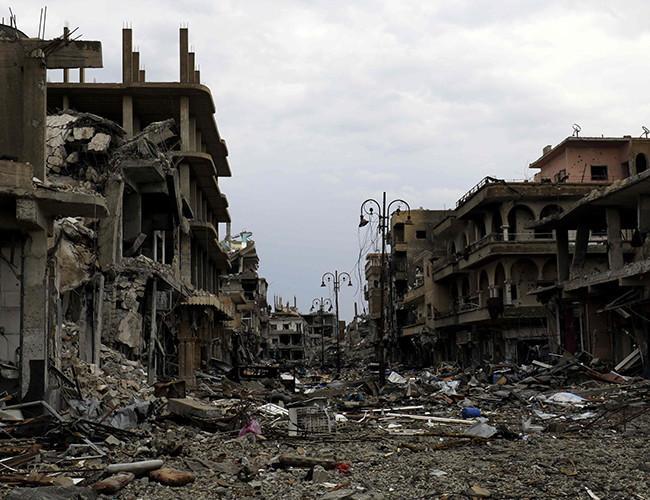
Islamic State of Iraq and the Levant (ISIL) militants, routed from one urban stronghold after another in Syria, have recently been moving deeper into Syria’s remote desert, where experts say they are regrouping and preparing their next incarnation.
The jihadists’ self-proclaimed “caliphate” with its contiguous stretch of land - linking major cities such as Syria’s Raqqa and Iraq’s Mosul - may have been vanquished, but many agree this territorial defeat will not mark the end of ISIL.
Beyond the urban and inhabited areas lies the vast Syrian Desert, also known as Badiyat al-Sham, famous for its caves and rugged mountains. It encompasses about 500,000 square kilometers across parts of southeastern Syria, northeastern Jordan, northern Saudi Arabia, and western Iraq.
The desolate landscape is a perfect hideout and a second home for many ISIL militants from the days before the birth of their caliphate. Experts estimate that hundreds of thousands of troops would be needed to mount search operations - and even more to put the desert under permanent control.
Once they melt into the desert, without an army of tens of thousands of supporters from dozens of countries, ISIL jihadists will resort to guerrilla-style attacks: scattered hit-and-run attacks and suicide bombings.
“They love fighting battles in the desert and they will go back to the old ways,” said Omar Abu Laila, a Europe-based opposition activist originally from Syria’s eastern province of Deir al-Zor, which lies in the heart of Badiyat al-Sham.
ISIL leaders appear to have made contingency plans that involve precisely this - regrouping in the desert and launching attacks, much like ISIL’s predecessor, al-Qaida in Iraq, did for more than a decade after the U.S.-led 2003 invasion.
Some of those plans are already on display. In the eastern Syrian town of Mayadeen, a former ISIL stronghold, the militants pulled back and disappeared into the desert after only a few days of battle with Syrian government forces earlier this month.
Brett McGurk, the top U.S. envoy for the anti-IS coalition, said the group is now down to the last 10 percent of the territory it once held in Iraq and Syria.
The U.S.-backed Syrian Democratic Forces (SDF) and Russia-backed government troops have been the most effective in the fight against ISIL, but are now waging parallel offensives in Deir al-Zor that could bring them into conflict with one another.
Gen. Joseph Dunford, chairman of the U.S. Joint Chiefs of Staff, called the SDF’s liberation of Raqqa an “inflection point” in the fight against ISIL, but warned that the coalition needs to stay focused.
“ISIS is on their heels right now and our job is to make sure they don’t recover,” Dunford said, using an alternative name for the group.